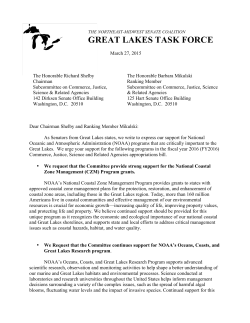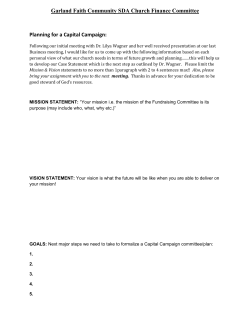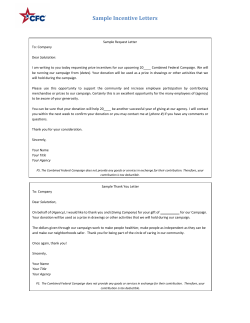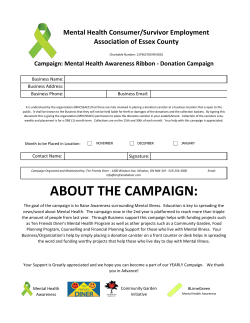
Learn more About Regional Water Safety Activities
GREAT LAKES SEA GRANT NETWORK www.seagrant.noaa.gov NEWS RELEASE Contact: Elizabeth LaPorte May 14, 2015 734-647-6227, elzblap@umich.edu Website: www.currentsmart.org For Immediate Release Be Current Smart: New Water Safety Campaign ANN ARBOR, MI–With summer just around the corner, millions of swimmers will soon flock to Great Lakes beaches. Rolling waves and light breezes are irresistible on a hot summer day, but waves and currents can be deadly. Sea Grant programs and partners in the Great Lakes region are announcing a new water safety campaign, Be Current Smart. The campaign includes tips for parents to keep a close eye on children while they’re near the water’s edge or in the water, and messages like “when the waves are high, stay dry,” and on the beach. “Beach-goers can take simple steps to ensure a fun, safe day in the water,” said Todd Breiby, Wisconsin Coastal Management Program. “Parents have an important role in keeping a close watch on young children and making sure they are wearing life jackets.” A key part of the campaign is the announcement of new water safety and emergency rescue equipment being deployed at hundreds of beaches in the Great Lakes region. Working groups in six states have collaborated with local and state officials on specifying and distributing equipment, including ring buoys and U.S. Coast Guard-approved life jackets for youth. “First responders in the area are so pleased to get new equipment,” said Mike Molnar, Indiana Coastal Management Program. “With tight budgets, this equipment is coming at the perfect time and will be put to good use.” Since 2002, dangerous currents, high waves and piers are related to the fatalities of more than 144 swimmers in the region. The Be Current Smart campaign includes a central website with links to animations; a video news release with interviews of U.S. Coast Guard, county sheriffs, and park officials; social media components; and news media resources. “Throughout the Great Lakes, piers are the most dangerous place for swimmers,” said Matt Warner, Michigan Coastal Management Program. “Swimmers are encouraged to steer clear of piers because of dangerous structural currents.” The Michigan Coastal Management Program supported the development of a suite of new resources, including beach sign templates, publications, lessons, diagrams and more. All materials are tailored for the Great Lakes region, are free and available for news media, beach communities, park staff, educators and others. See the Current Smart website for information about the campaign, and contacts in Illinois, Indiana, Michigan, Minnesota, Ohio and Wisconsin. ### The NOAA Storms Program is supporting the Current Smart campaign, as part of the Implementing Dangerous Currents Best Practices project. Led by the Great Lakes Sea Grant Network, partners in this effort include state Coastal Management Programs, the NOAA National Weather Service, first responders, park officials and others. • See the Current Smart website: www.currentsmart.org • Join the Discussion on Twitter: #currentsmart
© Copyright 2025











